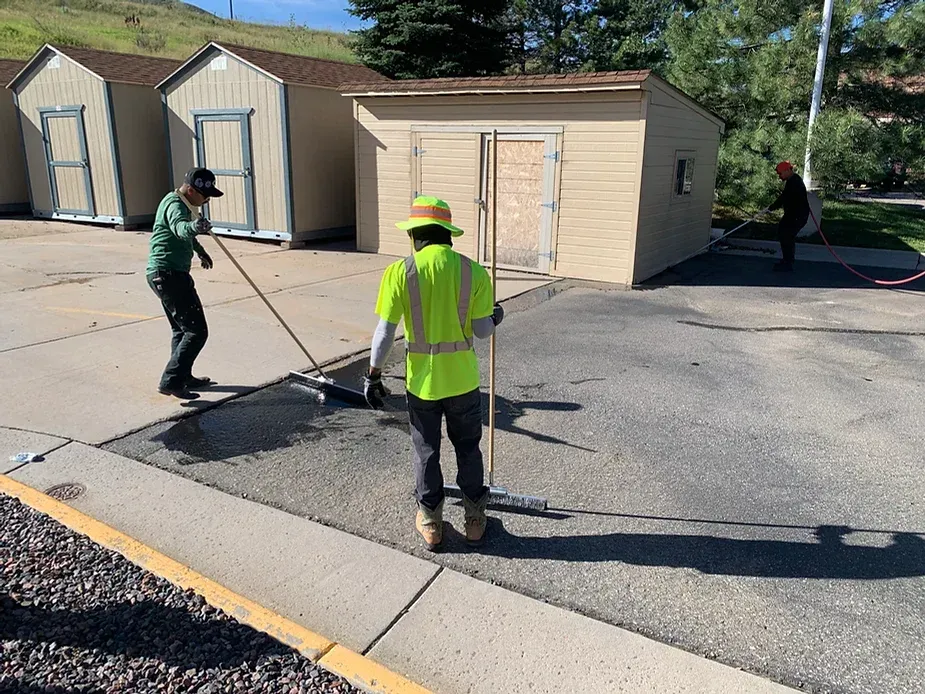
What is Asphalt Overlay?
Asphalt overlay is a pavement rehabilitation technique that involves applying a new layer of asphalt over an existing pavement surface. This process is commonly used to restore the appearance, functionality, and structural integrity of deteriorating roads, parking lots, driveways, and other paved surfaces.

Understanding the Process
Before the asphalt overlay is applied, the existing pavement undergoes thorough preparation. This may involve repairing cracks, patching potholes, and addressing underlying issues. Once the surface is properly prepared, a new layer of hot mix asphalt is applied using specialized equipment. The asphalt is then compacted to ensure proper bonding and smoothness, followed by finishing touches such as striping and markings.
Advantages of Asphalt Overlay
One of the key advantages of asphalt overlay is its cost-effectiveness compared to full-depth replacement. By resurfacing the existing pavement rather than completely reconstructing it, property owners can save time and money while achieving significant improvements in pavement quality. Additionally, asphalt overlay enhances the durability and longevity of the pavement, reducing the need for frequent repairs and maintenance. Furthermore, the fresh layer of asphalt can greatly enhance the aesthetic appeal of the property, improving curb appeal and property value.
When is Asphalt Overlay Necessary?
Asphalt overlay is typically recommended when the existing pavement shows signs of deterioration such as cracks, potholes, and surface distress. By addressing these issues early on, property owners can prevent further damage and extend the lifespan of their pavement. Additionally, asphalt overlay can be used as a preventive measure to protect the pavement from future wear and tear.
Factors to Consider Before Asphalt Overlay
Before embarking on an asphalt overlay project, it is important to carefully assess the condition of the existing pavement and consider various factors such as traffic volume, usage patterns, and climate conditions. Proper evaluation will help determine whether asphalt overlay is the most suitable solution and what specific techniques and materials should be used for optimal results.
Comparing Asphalt Overlay with Other Methods
While asphalt overlay is a popular choice for pavement rehabilitation, it is important to understand how it compares to other methods such as resurfacing and full-depth replacement. Resurfacing involves applying a thin layer of asphalt over the existing pavement, while full-depth replacement involves removing and rebuilding the entire pavement structure from the ground up. Depending on the extent of damage and the desired outcome, one method may be more suitable than the others.
Common Challenges and Solutions
Despite its many benefits, asphalt overlay projects may encounter challenges such as poor drainage, inadequate surface preparation, and underlying structural issues. To address these challenges, working with experienced professionals who can identify potential issues early on and implement effective solutions to ensure the project's success is important.
Maintenance Tips for Asphalt Overlay
Proper maintenance is essential for maximizing the lifespan of asphalt overlay and preserving its appearance and functionality. This includes conducting regular inspections to identify any signs of damage or deterioration, performing prompt repairs as needed, and implementing preventive measures such as sealcoating to protect the pavement from environmental factors and wear and tear.
Environmental Impact of Asphalt Overlay
Asphalt overlay offers several environmental benefits, including recycling and reusing existing materials, thereby reducing the need for new raw materials and minimizing waste. Additionally, advancements in asphalt technology have led to the development of sustainable paving solutions that minimize the environmental impact of pavement construction and maintenance.
Case Studies and Success Stories
Numerous case studies demonstrate the effectiveness of asphalt overlay in restoring and enhancing paved surfaces. From municipal roads to commercial parking lots to residential driveways, asphalt overlay has been successfully used to rejuvenate aging pavements and improve safety, functionality, and aesthetics.
Future Trends in Asphalt Overlay Technology
Asphalt overlay technology constantly evolves, with ongoing research and development to improve materials, techniques, and sustainability. Future trends may include using innovative materials such as warm mix asphalt, which offers environmental and performance benefits, and advancements in pavement design and construction techniques to enhance durability and longevity further.
FAQs
What is the difference between asphalt overlay and resurfacing?
Asphalt overlay involves applying a new layer of asphalt over the existing pavement, while resurfacing typically involves applying a thin layer of asphalt to address surface defects and improve smoothness.
How long does an asphalt overlay last?
The lifespan of an asphalt overlay can vary depending on various factors such as traffic volume, climate conditions, and maintenance practices, but it typically lasts between 8 to 15 years.
Can asphalt overlay fix all types of pavement damage?
Asphalt overlay is most effective for addressing surface distress such as cracks, potholes, and rutting, but it may not be suitable for addressing underlying structural issues or severe pavement deterioration.
Is asphalt overlay suitable for both residential and commercial properties?
Yes, asphalt overlay can be used for various applications, including residential driveways, commercial parking lots, municipal roads, and industrial facilities.
What is the typical cost of asphalt overlay per square foot?
The cost of asphalt overlay can vary depending on factors such as the size of the project, the condition of the existing pavement, and local labor and material costs. Still, it typically ranges from $2 to $6 per square foot.